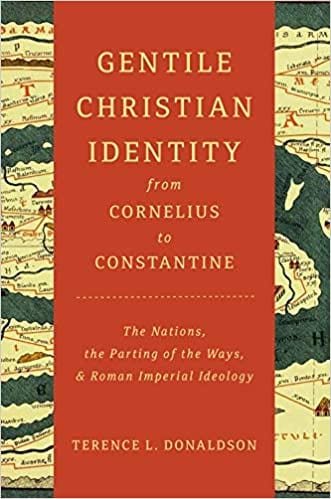Q. At various points in the book you point out how Jews accepted Gentiles as God-fearers and as proselytes. True, but as Scot McKnight showed long ago, the real evidence of Jews having some sort of mission to actually go out and recruit Gentiles to Judaism is lacking. This, it seems to me, is a fundamental difference in modus operandi with Paul and his co-workers, and in general with the attitude of the earliest followers of Christ who believed in recruiting people, both Jews and Gentiles to the following of Christ. This is surely something new compared to the adherence of some Gentiles to Judaism heretofore. Right? How would you compare these two ways of getting Gentiles involved in a religion grounded in Biblical views of one sort or another?
A. I agree with the general thrust of Scot McKnight’s argument (and that of Martin Goodman as well) that the concerted missionary program of Paul and other early Christ-believers represents something new and distinct, rather than just a Christ-centred version of a missionary enterprise already present in the Jewish world more generally (e.g., Harnack). One way to describe the difference, I suppose, is that the Jewish phenomenon can be seen as centripetal (gentiles being attracted to Jewish practices and synagogue communities, with Jews responding to this influx in various ways), while the Christian mission was centrifugal (carried out by agents commissioned by already existing churches to travel to other areas in search of potential converts and thus to establish new churches). I think the element of newness probably originated with the earliest community of Jewish disciples, who in light of their resurrection experiences felt an urgent need to proclaim to the rest of Israel the message that God had identified Jesus as the coming Messiah by raising him from the dead. This urgency then carried over into the mission to gentiles as well.
At the same time, however, I think the differences between the two approaches can be overstated. For one thing, as Alan Segal said once in a session of the Canadian Society of Biblical Studies, Jews in the first-century didn’t need to send missionaries out to other cities and provinces; they were already there. Further, the reception of interested gentiles was not simply a passive thing. Josephus’s description of the Jewish community in Antioch is a case in point: “they were constantly attracting to their religious ceremonies multitudes of Greeks, and these they had in some measure incorporated with themselves” (Jewish War 7.45). His account of the activity of Ananias and Eleazar in the conversion of King Izates of Adiabene (Antiquities 20.34-53) is another. On the basis of Paul’s statement that in the past he had been “preaching circumcision” (Gal 5:11), I think he can be included in this list. In the context of Galatians, “preaching circumcision” has to do with the activity of persuading non-Jews to accept circumcision; such activity most probably would have taken place prior to his Damascus experience. In other words, there was probably an element of mission—in the sense of a concerted effort on the part of some to incorporate interested gentiles “with themselves”—in the centripetal pattern as well. Still, this does not account for the central role that mission played in early Christian identity. [And I would add that the Judaizers in Galatians are trying to further convert Paul’s own converts to full-fledged Judaism of a Christ-centered sort, which is not the same thing as simply recruiting pagans. BW]













